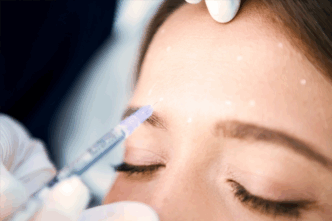Sagging breasts
The passage of time, pregnancies, and weight changes can alter the shape of the breasts, often leading to breast ptosis, or drooping breasts. This phenomenon is characterised by a downward displacement of the mammary gland, causing the nipple’s position to be too low. The degree of ptosis influences the correction technique and the appearance of potential scars.
The benefits of treatment for sagging breasts
- Lift and firm the breasts
- Improves posture and reduces back pain
- Corrects excess skin and limits irritation
- Offers long-lasting and natural results
- Customisation with implants or breast reduction
- Improves the aesthetic balance of the silhouette
- Boosts self-confidence

Frequently asked questions
What is breast ptosis?
Breast ptosis is characterised by sagging and drooping breasts. This sagging of the breasts is a natural reaction that intensifies with age, because breasts lose their shape and skin firmness with age, causing the areola to move downwards.
What causes breast ptosis?
The main cause of breast ptosis is ageing. As we age, the skin becomes less firm and elastic, affecting breast tissue and causing it to sag downwards. Pregnancy and breast-feeding are also often the cause of breast ptosis, as the size of the breasts increases sharply during this period, causing the breast tissue to relax, sometimes irreversibly. Weight changes have the same effect, and when weight is lost, the stretched skin often does not return to its original state, resulting in breast ptosis. Of course, the latter can also be due to gravity, particularly when the breasts are large. Without adequate support, particularly during physical activity, Cooper’s ligaments stretch, causing the breasts to sag. Finally, heredity plays a role in skin elasticity, which can be the cause of sagging breasts.
Concerned about sagging breasts?
There are different degrees of breast ptosis, classified according to the position of the nipple in relation to the inframammary fold. Mild ptosis (grade I) is characterised by a nipple located at or slightly above the inframammary fold, with a moderate drop. As soon as the nipple is located below the inframammary fold, the drooping appearance is more marked, and we speak of moderate ptosis (Grade II). Finally, severe ptosis (grade III) occurs when the nipple is well below the submammary fold, pointing downwards.
The pencil test is a simple way to assess the degree of breast sagging. Place a pencil beneath the breast, along the inframammary fold. If it stays in place without falling, the breast is considered to be sagging, and the firmer the pencil’s hold, the more pronounced the ptosis.
What are the consequences of breast ptosis?
As the breasts sag with age, it’s likely that the degree of breast ptosis will increase with time. This is certainly a natural phenomenon, but beyond the aesthetic aspect, it can present certain constraints. Sagging breasts can lead to poor posture, as well as back, neck and shoulder pain, especially when the ptosis is due to large breasts. In this case, skin irritations can also appear under the breast fold, in the form of rubbing, redness or even skin infections. Physical activity can also be uncomfortable, especially if the breast support is not effective. Finally, breast ptosis can affect self-confidence, which is why many women consider surgical treatment.
What can be done to correct breast ptosis?
- Natural methods
There are a number of natural methods for limiting breast ptosis. These are solutions for mild to moderate breast ptosis, but will have little effect on severe ptosis. Breast-strengthening exercises can initially help by firming the pectoral muscles. This can be combined with firming creams to improve skin elasticity. They are often accompanied by regular massages to stimulate blood circulation and maintain elasticity. These methods limit the progression of breast ptosis, but generally have no significant impact. - Cosmetic surgery
Surgical procedures are undeniably the most effective methods of correcting sagging breasts. The most popular solution is a breast lift (mastopexy), which restores the shape and firmness of the breasts. Mastopexy can be combined with breast augmentation if you wish to increase the volume of your breasts in addition to correcting breast ptosis. In this case, breast implants are placed during the facelift. Conversely, if breasts are too large, breast lift can be combined with breast reduction, removing excess breast tissue in addition to excess skin.
Can breasts sag after surgery?
Breasts rarely drop significantly after breast surgery. They are designed to offer long-lasting results, but factors such as ageing, gravity, and weight fluctuations can have a slight effect on the breasts over the long term.
How much does breast ptosis correction cost in Belgium?
A breast lift costs €4,950 without implants, and between €5,950 and €6,775 with implants, with prices varying according to size. These prices do not include a preliminary consultation with a surgeon, which costs between €30 and €70.




